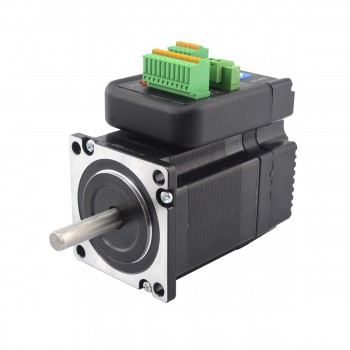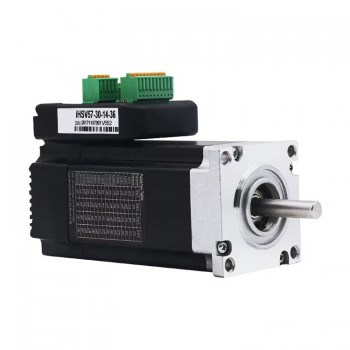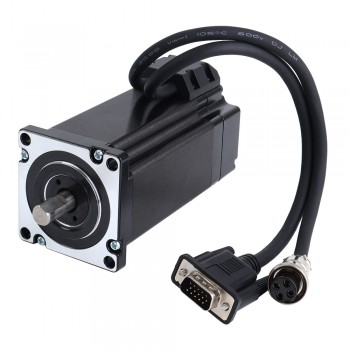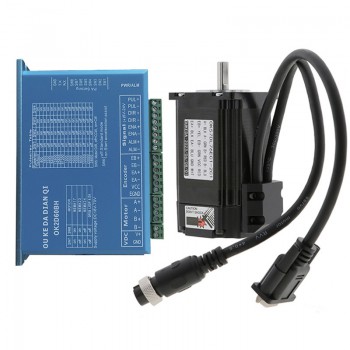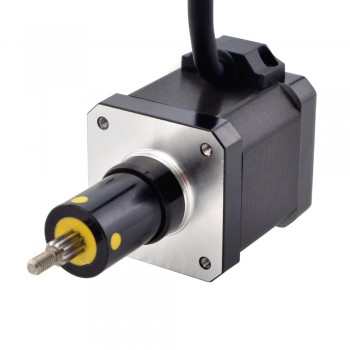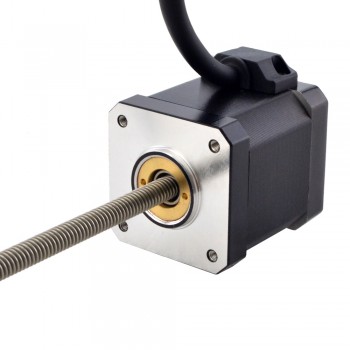1.Brief of worm reduction gearbox
A worm reduction gearbox is a mechanical transmission system using a screw-like worm gear to mesh with a worm wheel for significant speed reduction and torque increase, operating on non-intersecting shafts at a 90-degree angle. Its compact design, high reduction ratios, and potential for self-locking make it ideal for applications like elevators, conveyors, and automated gates where holding a load is crucial.
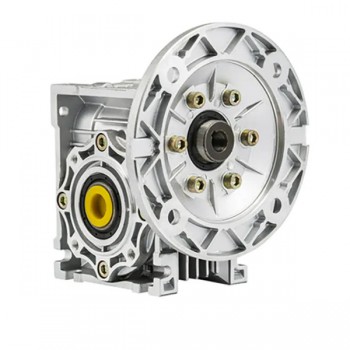
2.Working principle of worm reduction gearbox
1.Input Rotation: The worm (input shaft) is connected to a motor or other power source and begins to rotate.
2.Meshing Interaction: The helical threads of the rotating worm engage with the teeth of the worm wheel.
3.Speed Reduction and Torque Amplification: As the worm turns, its threads push the worm wheel, causing it to rotate. Because the worm typically has only one or a few threads and the worm wheel has many teeth, the worm wheel rotates much slower than the worm, resulting in a significant speed reduction. This speed reduction is accompanied by a proportional increase in the output torque.
4.Self-Locking: The design creates significant friction and a unique angled engagement that prevents the worm wheel from being able to drive the worm in return. This self-locking feature is crucial for applications where loads need to be held in place.
3.Key advantages of worm reduction gearbox
1.High Torque Output:One of the principal advantages of worm reduction gearbox is their ability to deliver high torque output. The gear ratio in a worm gearbox can be accustomed to achieve major speed reduction, while simultaneously increasing the torque transmitted to the driven load.
2.Condensed and Space-Saving Design:Worm reduction gearboxes are known for their compactness. The small footprint makes them ideal for applications where space is restricted, such as in confined machinery or automated systems. Their compact design also makes it easier to integrate them into machinery with constrained space requirements, deprived of sacrificing performance.
3.Self-Locking Feature:One of the greatest prominent features of worm reduction gearboxes is their self-locking competence. This means that when the worm gear is not in motion, the worm wheel cannot rotate by itself. In other words, the gearbox stops back driving, which is the opposite rotation of the output shaft due to external forces acting on the system
4.Smooth and Noiseless Operation:Worm reduction gearboxes operate smoothly and silently due to the nature of the interlocking between the worm and worm wheel. Unlike spur gears, which can produce more noise and vibrations due to their direct tooth-to-tooth contact, the helical shape of the worm provides a steady arrangement, reducing friction and diminishing noise.
5.Well-organized Power Transmission:Even though worm gears are not as effective as other gear systems, they still provide a relatively high level of power transmission efficiency, particularly at low to moderate reduction ratios. The efficiency of a worm reduction gearbox is influenced by factors such as the material used, lubrication, and the number of threads on the worm.
6.Resourcefulness in Applications:Worm reduction gearboxes are versatile and can be used in a variety of applications across different industries. They are normally found in material handling systems like conveyors, automated doors, and lifts, as well as in lifting and hoisting equipment such as cranes and winches.
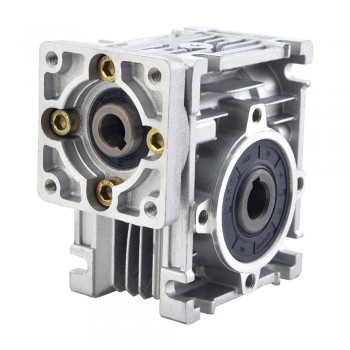
4.Crucial factors to consider for worm reduction gearbox maintenance
1.Lubrication:Lubrication is one of the most critical factors in the maintenance of worm gearboxes. It helps to reduce friction and wear between the worm gear and the worm wheel. Proper lubrication can help extend the lifespan of the gearbox and improve its performance. The type of lubricant used should be appropriate for the operating conditions and the gearbox design.
2.Inspection:Regular inspection of worm gearboxes is necessary to detect any signs of wear or damage. This can help to identify problems before they become severe and result in costly downtime. The inspection should include checking the teeth of the worm gear and the worm wheel, as well as the bearings and seals. Any signs of wear or damage should be addressed promptly to prevent further damage.
3.Temperature Monitoring:Worm gearboxes generate heat during operation. Excessive heat can cause the lubricant to break down, leading to increased friction and wear. It is essential to monitor the temperature of the gearbox regularly and ensure it remains within the recommended operating range. If the temperature exceeds the recommended range, the gearbox may need to be shut down until the cause of the problem is identified and addressed.
4.Cleaning:Proper cleaning of worm gearboxes is critical to prevent the buildup of dirt and debris, which can cause increased friction and wear. The gearbox should be cleaned regularly using appropriate cleaning agents and techniques. Care should be taken not to damage any gearbox components during cleaning.
5.Proper Storage:Proper storage of worm gearboxes is crucial when they are not in use. They should be stored in a dry, cool, and clean environment to prevent corrosion and other forms of damage. Before storing the gearbox, it should be cleaned, inspected, and properly lubricated.
6.Proper Installation:Proper installation of worm gearboxes is essential to ensure optimal performance and longevity. The gearbox should be installed in accordance with the manufacturer’s recommendations, using appropriate tools and techniques. Care should be taken not to damage any components during installation.
